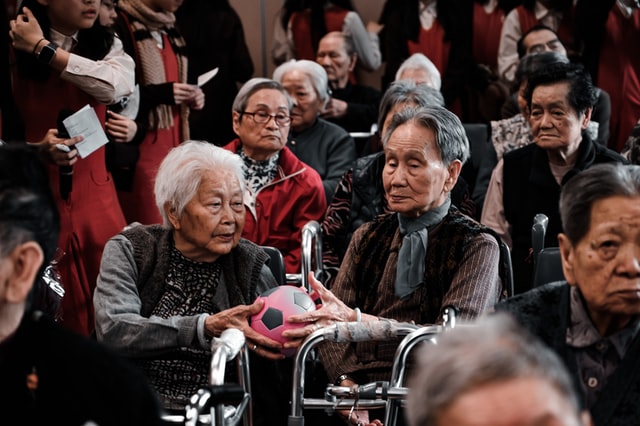
There is increasing interest in co-production in public services and in social care. This blog reports on a PhD study of timebanks which are now seen as an example of co-production but have a long history in being promising indications of mutual aid and reciprocal support between members of local communities. Social care interest groups will note the connections between ideas such as timebanks with mutual aid, volunteering, and good neighbourliness. Social workers will note the connections with prominent practice frameworks covering strengths based or asset based social work. Essentially timebanks work on the idea that the giving of time by one person will be rewarded by eventual receipt of someone else’s time, directly or indirectly, because the record of the transaction has been ‘banked’.

This blog reports on a PhD study of timebanks which are now seen as an example of co-production but have a long history in being promising indications of mutual aid and reciprocal support between members of local communities.
Methods
This article draws on data from Ruth Naughton-Doe’s PhD thesis which were collected 2013-15. This article focuses on three questions:
- How are timebanks in England working?
- Are they facilitating co-production?
- What can they contribute to preventive social care?
Six timebanks were recruited as case studies following an advertisement publicised by the national umbrella organisation, Timebanking UK. While a range of timebanks volunteered to take part, the final sample was chosen to span different contexts, including a small rural scheme (38 people signed up to the timebank), an urban General Practitioner (GP) surgery (200 people involved) and a 15-year-old timebank (1000+ involved). All had different financial backing, ranging from National Lottery funding, local authority funding, and two were part of national ‘host’ organisations. The six also differed in size, locations, the year of their founding (spanning well-established to recent start-ups). Thirteen staff were interviewed; 10 timebank ‘brokers’, who directly organised activity and exchanges and 3 timebank managers, who supervised them and undertook administration tasks. For the volunteers, Naughton-Doe interviewed 36 timebank members about their experiences, 15 took part in two focus groups and 32 responded to open questions on a survey. Additionally, some data from the national Timebanking UK organisation were analysed.

This article focuses on three questions: 1) How are timebanks in England working? 2) Are they facilitating co-production? 3) What can they contribute to preventive social care?
Findings
Some timebanks had stopped organising person-to-person exchanges (the classic ‘if I give an hour of my time then someone will give an hour back to me (eventually)’) to run group activities. This meant that the volunteers/timebank members did not need Disclosure and Barring checks (these are only needed by some volunteers, see https://www.gov.uk/criminal-record-checks-apply-role and are referred to as ‘police checks’ in this article) or lengthy risk assessments as their activity was supervised and did not involve supporting quite vulnerable people on their own. If timebank members were giving their time to people who were ‘vulnerable’ or had care and support needs such activities were thought by the brokers to present risks to both parties. This is what the authors term taking a ‘paternalistic’ approach, although many brokers were moving away from the individual matching that necessitated careful and time-consuming ‘matching’ of the two parties; which they described as ‘a rare blend of serendipity and social engineering’. While there were requests for help with domestic help and gardening, these were not generally what the timebank members wanted to offer. The authors note that this situation is not unique to the UK but that other countries have come across similar problems in delivering a cost-effective and consistent service.
Conclusions
Based on these findings, the implementation of timebanking in England remains difficult despite sizeable investment by local authorities and charities. One set of reasons given in this article is that their proponents felt inhibited by what they saw as time-consuming regulation (although DBS check are currently not taking long and are only needed for some roles), a paternalistic culture (among the brokers), and the complexity of the timebanking mechanism which required adequate resources. However, other parts of the voluntary sector, which have not always had such investment, may question if it is a just a matter of risk aversion and argue that there is some benefit from the protection of volunteers and those receiving their services from checks and risk assessments. The voluntary sector has long argued that volunteers need support and that they are not a ‘free replacement’ for social care. While this study took place up to 2015, the authors note at the end of their article that only three of the six case studies were still running in 2020, and two of these had moved to group-only activity. Ideas of mutual aid, co-production, or the building of social capital seemed hard to put into practice if social care is included in timebanking. There are likely to be other messages here for the wider voluntary sector and social care providers.
Based on the findings, the implementation of timebanking in England remains difficult despite sizeable investment by local authorities and charities.
Strengths and limitations
As noted, this article reports data collected over five years ago and some things have changed. A case study method provides rich data but necessarily draws on a few examples. The strength of the study lies in its depth as a three-year PhD study which means someone has spent a lot of time thinking about the subject and making lots of contacts (most research studies never last that long). Six case studies are a good number and those chosen were wide-ranging. Data from different sources were analysed together, including interviews, observation, documents (such as reports and funding applications), and ‘output’ data; this allowed for ‘triangulation’ which provides different perspectives on a subject. However, some timebanks that lasted only a very short time were not available to contact and the funding of the timebanks is not discussed in detail so that comparisons with other voluntary activity are not possible.
Implications for practice
There have been many hopes that ‘big society’ would provide ‘low level’ social care, forgetting that most social care is provided by family and friends (the ‘Big Society’ policy of the Coalition Government in 2010 promoted increased community involvement to support public services). This detailed review of the operation of timebanks suggests that they are unlikely to do this and they now seem to be very much blending aspects of the UK’s strong tradition of volunteering with emphases on reciprocity to an extent. This may explain the interest of funders. Group volunteering may be popular but needs organising, enthusiasm and, like all other volunteering, must be acceptable to those on the giving and receiving end, especially if it involves activities that are social care orientated. Over time, most volunteer groups have had to accept that they have responsibilities to both ‘giver and receiver’ and that straightforward exchanges are not always straightforward.

Group volunteering may be popular but needs organising, enthusiasm and, like all other volunteering, must be acceptable to those on the giving and receiving end, especially if it involves activities that are social care orientated.
Conflicts of interest
No conflict of interest
Links
Primary paper
Naughton-Doe Ruth, Cameron Ailsa, Carpenter John (2020). Timebanking and the co-production of preventive social care with adults; what can we learn from the challenges of implementing person-to-person timebanks in England? Health and Social Care in the Community. 2020; 00:1–11. https://doi.org/10.1111/hsc.13166
Photo credits
Photo by jojo (sharemyfoodd) ◡̈ on Unsplash
Photo by Alexis Brown on Unsplash
Photo by Alex Perri on Unsplash
